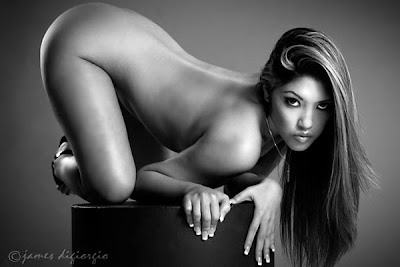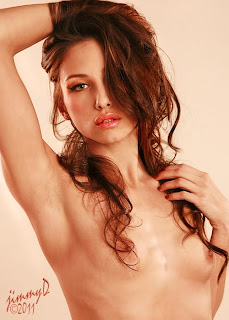
As a human, a photographer, and a writer, I have three voices: The voice that comes out of my mouth, the voice I use as a photographer, and my writing voice.
Like you, unless you're a mute I suppose, I was born with my vocal voice. I didn't need to go in search of it. It was just there. A smack on my butt moments after I emerged from the safe confines of my mother's womb and there it was: My voice. Also like you, I've spent the subsequent years defining, refining, and using my voice. Sometimes I overuse it. Occasionally I don't use it when I should. At times, I've used it wisely and at other times not so wisely.
My writing voice is one I had to go in search of: It wasn't natural. Sure, there are writers whose writing voices seem as natural as their speaking voices but I'm not one of those lucky few. At least not yet. My writing voice is still a work-in-progress. Besides writing about photography, I've applied my writing voice in other areas over the years, sometimes successfully and other times not. Like my speaking voice, my writing voice is heard. You aren't hearing my physical voice as you read this but you're hearing a "voice" in your head saying my words.
My photographer's voice is another matter. It's not heard at all. Still, it speaks. It might not always speak to everyone but it speaks to me. In my mind, photographers are like mimes. Mimes communicate visually and with visual cues. You don't need to hear a mime with your ears or via a "voice" in your head but you understand what they're saying whether you hear them or not. Good photographers do the same. In some ways, good photographers are a lot like good mimes.
Someone once said, "Good photography speaks with silence." I couldn't agree more.
Although I use the word, "style," often enough when describing a photographer's methods of silently communicating -- as in a photographer's "personal style" -- I only do so because it's commonly understood what I'm referring to. Beyond that, I don't much like using that word to describe a photographer's work. Mostly, because it sounds so purposeful. It also sounds a little highfalutin. I've seen photography which truly excelled in many ways yet was anything but highfalutin, style notwithstanding.
Besides, we're not born with style. Style is something we develop and use and it's not wholly our own. It's generally developed or applied as a result of trends, fads, and the influences of family, friends, peers, people we look up to, cultures, software developers, equipment manufacturers, and more. We are, however, born with a voice. We are also born with the ability to create other voices, sometimes voices which are as easily heard as our vocal voices: Voices like writing voices and artistic voices.
A lot of photographer's go in search of their personal styles. Unfortunately, when personal style is perceived as something external and something purposely created, photographers often spend more time looking for tools, techniques, and other things outside of themselves to apply to their work in order to bestow something on that work that seems personal and stylistic. What they're really doing is applying those things, things which are often created by others, and claiming them as their own. That's not always a bad thing. In fact, it can be a good thing, especially when trying to satisfy clients or customers, but it's often not a unique personal style. More often, it's a copied style. A mimicked style. Worse, an often and much copied and mimicked style. It's possible, of course, to have a style without having a voice. You might even get by on style alone. Plenty of photographers do. But when you add a voice to style, you might get by even better.
Finding your photographer's voice is something entirely different than applying style. First off, it's yours. Second, it doesn't require applying external things to your work. Third, and most importantly, your voice doesn't have to be obvious in order for it to communicate. Like your speaking voice, it can whisper or shout. It can hum or sing. It can speak eloquently or coarsely. But above all, it's yours and speaks of you as well as what you're pointing your camera at.
How do you find your photographer's voice? Well, much like when you're speaking or writing, it helps when you're photographically expressing things which are meaningful to you. We all love speaking of the things we love. We enjoy talking about the things that interest us. Photographers should do the same. They should photograph what they love. They should shoot what they're truly interested in. In so doing, they will generally add personal passion to their photography. Not simply their passion for photography itself, but a passion for the things they photograph. That passion will be evident beyond the stylistic tools and techniques they might apply. Their pictures won't simply express style, they'll express it with a voice. A passionate voice. Their voice.
There are other types of photography I could easily apply my skills and knowledge to but they don't generally interest me much. My photographs of those things might be technically good but risk being generally boring or without much passion, mostly because I simply wouldn't have much interest in them and, because of that, they wouldn't include a passionate voice used to express them. I often hear things like, "You're a photographer. You should be able to shoot anything." There's both truth and a lack of it in that statement. I can cook, for instance, and some of the things I cook I'm passionate about. But I don't have passion for all of the things I might cook that, say, many great chefs have. Nor do I have passions for many foods others might have. Consequently, I don't cook those foods even though, like so many people, I'm generally passionate about food. Sometimes, a little too passionate as my belly will attest.
One of the really big things my new book,
"Zen and the Art of Portrait Photography," tries to help photographers discover is their voice: Their portrait shooting voice. I don't always express it in the book as a "voice," but helping others discover their photographic voices is what it hopes, in many ways, to achieve.
The photo up top is Nautica. My client (not the model) hated it, asking me, "What am I supposed to do with this artsy shit?" But it speaks to me. And, according to Nautica, it speaks to her. I wouldn't be surprised if it speaks to others.
 Earlier today, someone on FB, actually, someone who runs one of the many photography pages I "Like" on FB, asked, "Who is your favorite photographer?" I thought about it long and hard and it seems I don't have a favorite. Not one, individual, single favorite.
Earlier today, someone on FB, actually, someone who runs one of the many photography pages I "Like" on FB, asked, "Who is your favorite photographer?" I thought about it long and hard and it seems I don't have a favorite. Not one, individual, single favorite.












